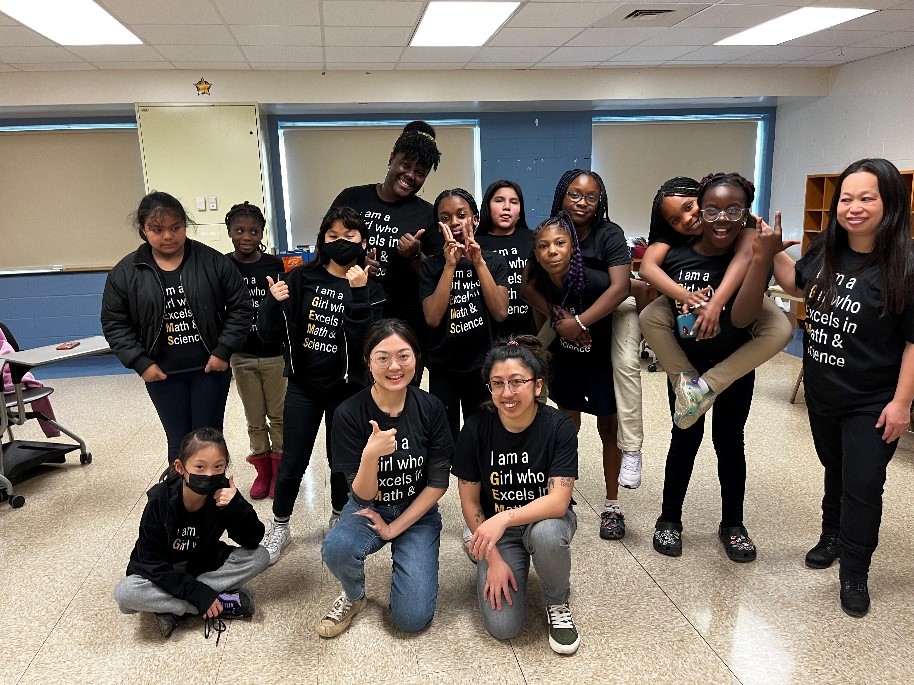Encouraging girls to see themselves as STEM problem-solvers who make a difference
A Boilermaker Educator founded Girls Excelling in Math and Science (GEMS) to inspire her daughter – and all girls – to take higher-level math and science classes in high school and beyond. Today, GEMS’ mission is to ensure that a girl sees herself as a change agent or a problem-solver, a possible technology entrepreneur, engineer, or scientist – and as a person who makes a difference.
“When I started it in 1994, technology was not really in the hands of the consumer, let alone young girls,” says alumna Laura Reasoner Jones (BA Elementary Education, ’73), GEMS founder. “I was concerned about math and science in school.”

GEMS is an international network of clubs and resources created to assist adults and girls to explore options for careers and education in STEM fields. Its mission originally was to encourage girls to take harder math and science classes in school, but today it has evolved into encouraging girls to see themselves as scientists, engineers, entrepreneurs, and future professionals in STEM fields.

Jones graduated in 1973 from Purdue with a bachelor’s in Elementary Education, and after earning her master’s in Special Education she began teaching. Later she was inspired to start GEMS when her daughter Julie did not want to attend a magnet school because she said, “Math is hard, Mom.” Jones knew that math was not hard for her daughter because Julie had great test scores and good grades. Jones wanted to inspire Julie and all girls by creating a space where they would be free to empower each other by learning STEM skills together, and so GEMS was born.
The first GEMS club began with just 25 members, led by Jones and her daughter’s fifth grade teacher. The club now has over 160 chapters throughout the world with partnerships including Google, NCWIT, SciGirls, and Lego Robotics. Some graduates have gone on to study at Carnegie Mellon and Pennsylvania State.
Purdue has numerous faculty affiliated with GEMS through the College of Education: Jill Newton is the main faculty member and is assisted by fellow faculty Signe Kastberg and Elizabeth Suazo-Flores; graduate students Maria Luisa Nuguid (Lisa) and Yi Zhu; and several undergraduate research assistants. Lynn Bryan, executive director of the Center for Advancing the Teaching and Learning of STEM (CATALYST), works with GEMS to help provide funding.
In 2018, ownership of GEMS was transferred completely to Purdue and the College of Education. Recent graduate Lily Zhou, now a Professor at California State University, wrote her doctoral dissertation on GEMS titled, “A Narrative Inquiry of Female Mathematics/STEM Educators: Crossing Boundaries Among Multiple Contexts .”
One of the current goals of GEMS is research on the original members from 1994 about their STEM and math identity and the development of spatial skills, the lack of which sometimes hinders girls from pursuing STEM fields. Action research done on the first GEMS club shows that participation in clubs like this have a positive impact on girls’ enrollment in advanced math, science and technology classes in high school.
One of the most recent clubs is held in Indianapolis, led by Purdue researchers.

“These girls are not coming from Purdue, and this is their first experience with the University. We want to make it feel like a home to them,” said Suazo-Flores.
Other GEMS members are working on developing curricula and working to train and empower leaders, along with finding funding for future clubs.
Jones described one of her favorite GEMS memories as a time when she was showing a group of Pennsylvania girls how to use a soldering iron.
“We were finishing up and all of the little flashing robots they had soldered together worked,” Jones said. “This young girl, Kristin, picked up one of the soldering irons we were packing up and said, ‘I’m getting me one of these for Christmas.’”
GEMS is now part of a nationwide effort to improve opportunities for girls and under-served minorities through multiple efforts such as partnerships forged in the Clinton Global Initiatives – CGI America, NCWIT, National Girls Collaborative Project, Changemakers, and others – helping girls reach their potential.
Sources: Laura Jones, lrjones806@gmail.com; Elizabeth Suazo Flores, esuazo@purdue.edu
Writer: Jonathan Martz, martz0@purdue.edu